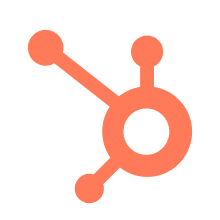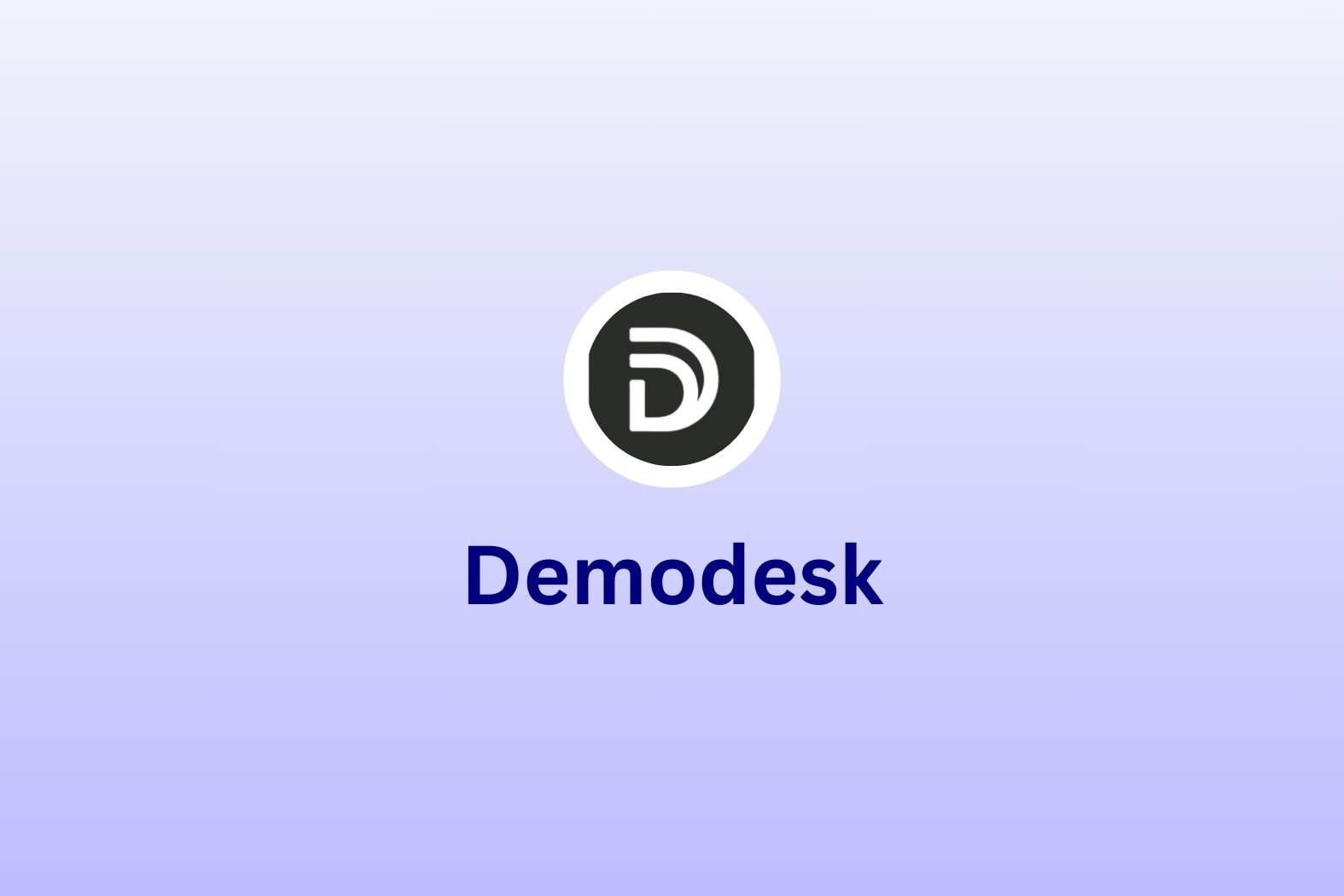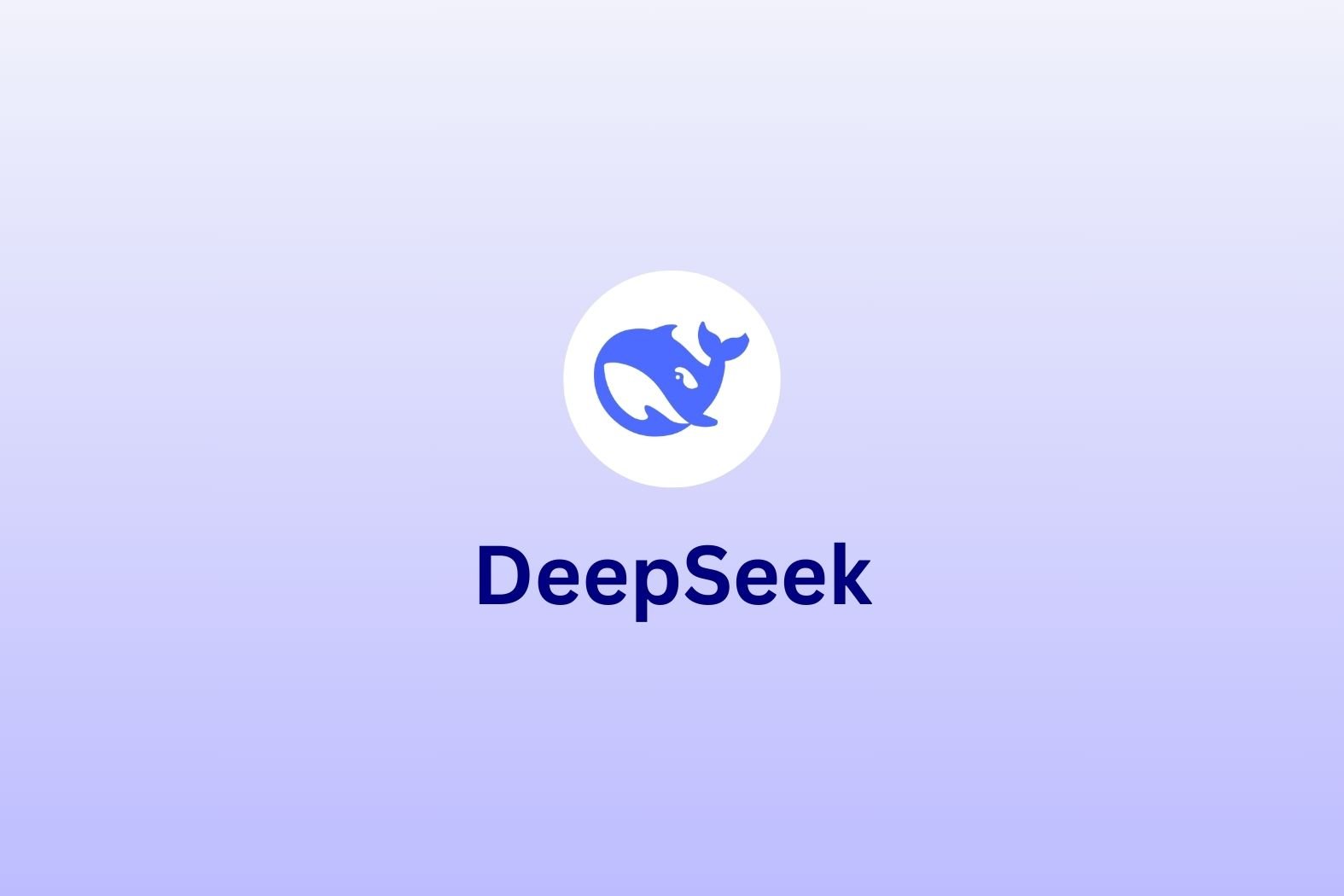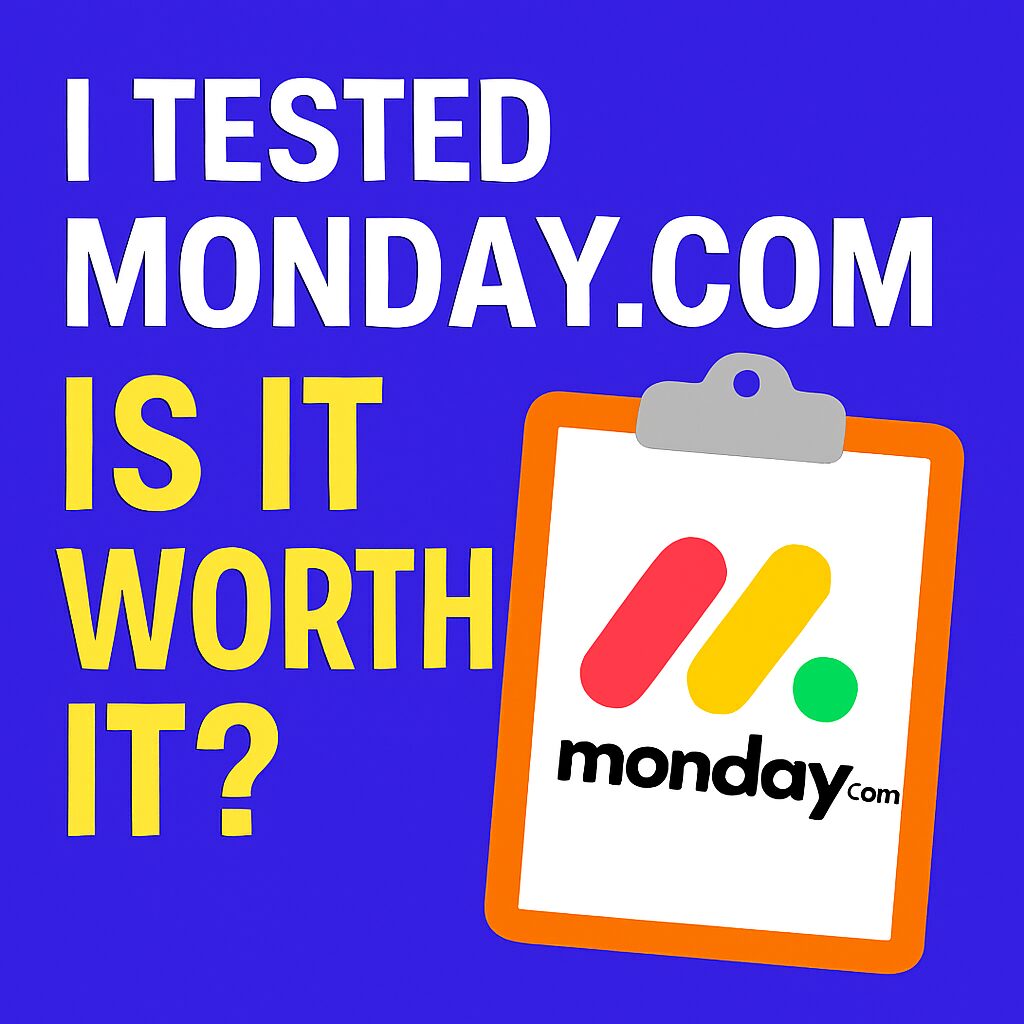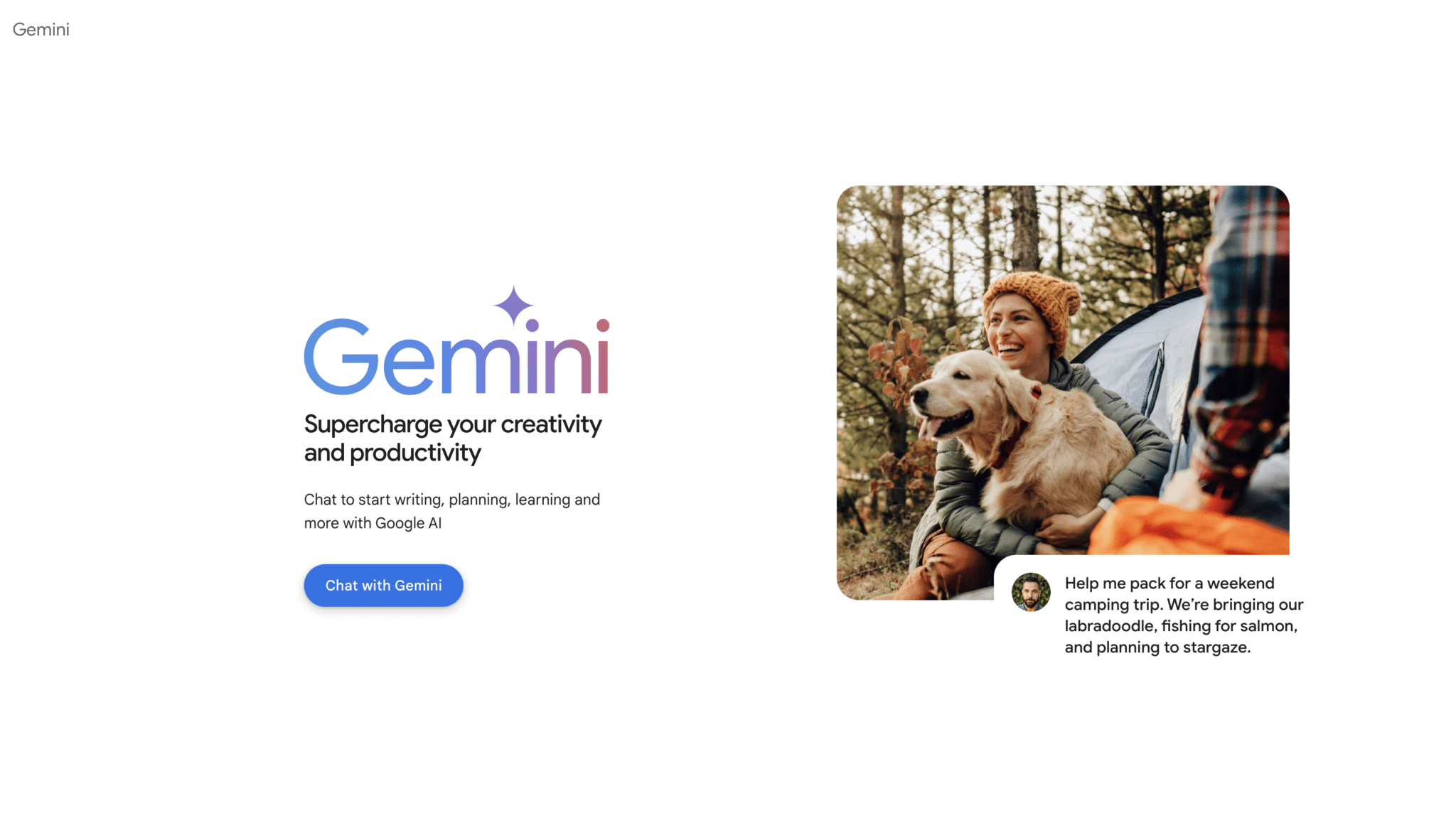In this Demodesk review, I’ll share my honest thoughts and opinions after playing around with its free trial. I’ll break down how I found its AI summaries, transcription accuracy, and the AI coaching feature. I’ll also cover Demodesk’s pricing and whether it might be worth switching to a competitor.
But let’s clear something up first. I’m a writer, not a salesperson, so I don’t fit neatly into Demodesk’s target audience. I do, however, have years of experience writing about AI meeting assistants, and I know what makes them valuable to larger teams.
I’m also checking out various tools, Demodesk included, to see whether they could help me in my own small-scale business. I don’t usually have that many calls as I work asynchronously, but when I do, it’s nice to be able to focus on the conversation and receive meeting notes automatically.
With that in mind, I set up a free Demodesk account after constantly hearing about it being compared to tl;dv. Both are German AI notetakers built for sales teams, so the comparison makes sense, especially as more companies shift to European (and DACH-based) SaaS platforms in response to evolving regulations like the EU AI Act.
Here’s what I found after testing Demodesk for myself—no fluff, just the good, the bad, and what you should know before deciding if it’s the right fit.
The Demodesk Rundown: TL;DR
Demodesk is a German-based AI meeting assistant designed for sales teams. It was founded in late 2017, but it’s only recently started to gain traction as a viable competitor to heavyweight sales tools like Gong and Modjo.
Demodesk uses AI agents for sales teams to automate post-call activities, from filling in the CRM to automatically generating follow-up emails. It’s a nifty tool with a simple pricing structure, though it can be a bit steep compared to the competition.
In my personal experience, it struggled a lot with speaker recognition, commonly misattributing speech. The AI notes were flawed and the language detection was laughable (it gave me follow-up emails in Norwegian for a conversation in English and German). Having said all that, it does show glimmers of promise here and there.
- Best for: sales teams that don’t need to use multiple languages and won’t let a little speaker misattribution spoil their day.
- Not great for: teams that want accurate transcription and high quality speaker recognition.
- Verdict: useful for its playbooks and coaching, but inaccuracies hold it back from being good value for money.
Want the in-depth Demodesk review? Read on for my honest experience with the free trial.
What is Demodesk and What Did I Think of It?
Demodesk is a sales-focused meeting platform that uses AI agents for meetings and sales processes to automate post-call workflows. It provides AI-generated summaries, notes, and even follow-up emails. It’s well received for its AI coaching, but how well does it actually work? I tested the free trial to find out.
Firstly, Demodesk only allows you to sign up with your business email. For me, a freelance writer, this was almost an immediate problem. I tend to use my personal email for work stuff as I don’t receive company emails very often. Thanks to tl;dv, I did have one handy so I signed up with that and the rest of the process took just a few seconds. I selected the permissions I wanted to give it (necessary ones only) and after confirming, I was prompted with this: “Demodesk needs full access to your Google account function properly.”
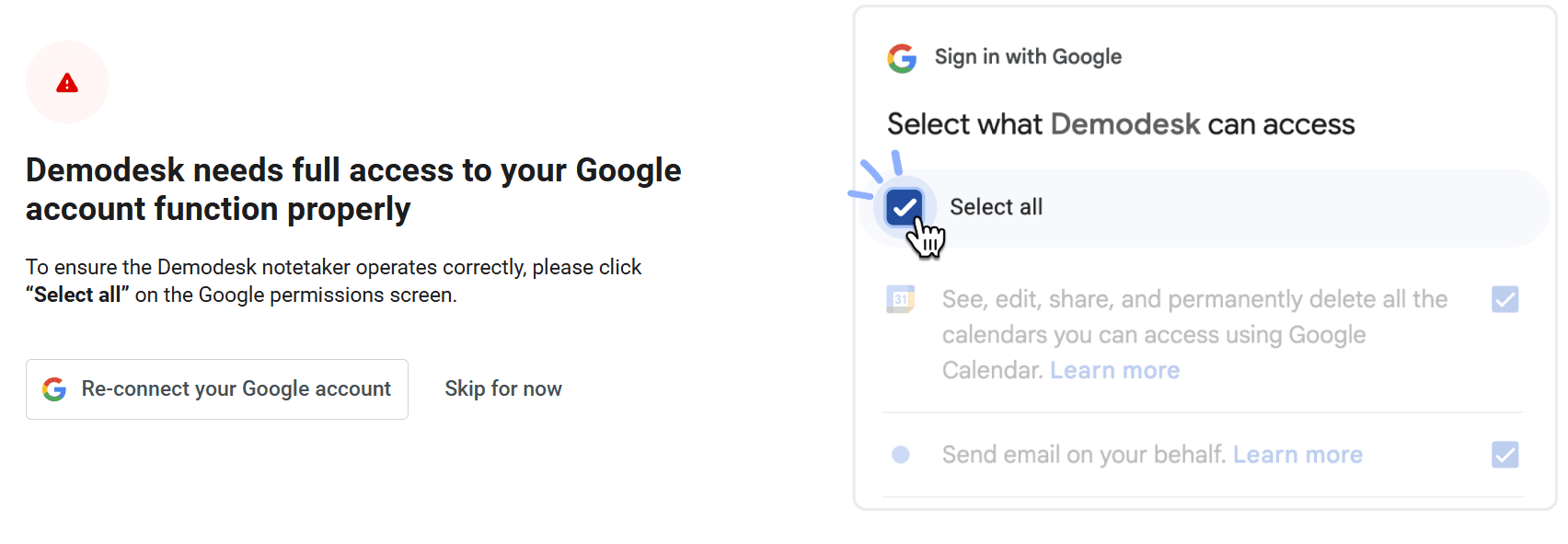
Firstly, the phrase has a typo which isn’t a huge deal but it makes me less likely to trust them with my entire Google account. Secondly, it doesn’t explain why it needs such access. I understand that for AI agents to work smoothly, they need to use my tools on my behalf, but a nice little explainer could’ve been helpful. Instead, I got a red warning sign and decided to skip instead.
During the short onboarding process, I got to have a quick glimpse of the settings (like who receives post-meeting recaps) which was a nice touch, but as I entered the platform proper, I couldn’t find where to schedule a meeting. This might be because I didn’t give it full access to my Google account (or calendar), but I would have thought there’d still be an option to manually schedule a meeting.
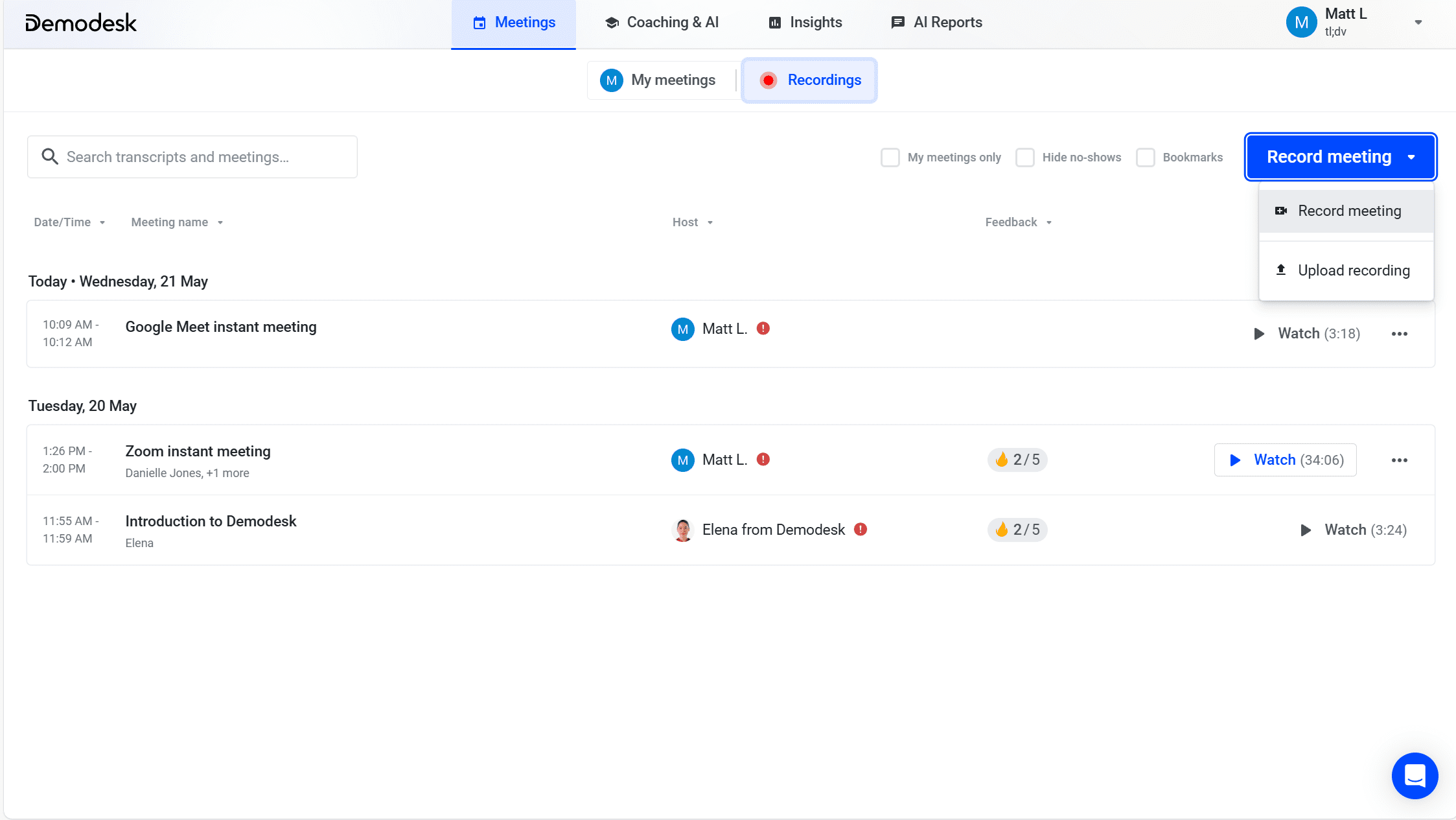
While I couldn’t schedule the bot to join in advance (presumably because I hadn’t integrated my calendar), it was easy enough to get it to join a meeting that had already started by just pasting a link. I set up a Zoom call from my laptop on the browser and away we went (I also later tested it with Google Meet and it worked just the same).
When it joined the call, it didn’t announce its arrival or tell anybody it was recording. The background image of the recorder does say that the meeting is being recorded, but that’s about as much notice as you’re going to get. This can be seen as both good and bad. It doesn’t interrupt the call or freak anyone out with a creepy robotic voice announcing that it’s recording everyone (I’m looking at you, HappyScribe), but in not telling people, it’s a potential privacy concern. It relies on the user to make sure consent has been gathered beforehand which is flaky at best.
So far, Demodesk was so-so. Easy to set up and invite to a call, but it had questionable privacy, both with the permissions and the way it joined the call. The UI is simple and minimalistic, but after the call is where I got the first real taste at what it could do.
The video playback loaded almost as soon as the call ended, but the notes and transcript took a few moments to load. When they did, I was confronted by a questionable summary that had somehow taken on a product feedback template that I was unable to change, and an automatically generated email for me to send to Dani, my colleague on the call. Here’s the email it suggested based on our discussion.

While the tone wasn’t an exact fit, it was better than I expected. It kept the informal tone and clearly understood what we had been talking about. However, the AI summary in the ‘product feedback’ template was clunky to say the least.
It started off with getting the context completely wrong, even though the provided timestamp linked to an accurately recorded transcript (albeit with several speaker identification issues). You can see the majority of the report in the screen grab below. It thinks I’m criticizing tl;dv’s onboarding process, but you can see I’ve highlighted the transcript where it accurately reports that I said HappyScribe.

Needless to say, I wasn’t too impressed with the automatic summary so I decided to prompt the AI assistant to give me a summary of the meeting instead. This was much better. Not only did it accurately summarize what was discussed, it actually got the context more or less right, contradicting the automatically generated summary. It’s a shame this wasn’t the initial product.

What’s great about Demodesk’s AI assistant is that you can continue to ask it questions about the chat and it will give more specific answers. It’s only as good as the transcript it has though, and in Demodesk’s case, there were a lot of times where it misattributed speech. In all honesty, my Wi-Fi wasn’t the best and we occasionally spoke over each other. But that’s life. That happens on calls sometimes and if your notetaker can’t accurately detect who said what then your notes are practically worthless.
Still, I played around with the tool a little more, checking out the AI coach tab to find it had speaker analytics from the call. It showed my talk-to-listen ratio, the amount of questions I asked, my engagement, longest monologue length, and even how many words I said per minute. This was pretty cool to see, but what stood out even more was how simple it was to request AI feedback for how to improve.
There were a number of sales playbooks to choose from, including BANT, MEDDIC, and SPIN, as well as the option to create your own from scratch. I picked the General one as it wasn’t a sales call, but I still wanted to see what it would do. It told me what I’d done well and where I could’ve improved from a selling standpoint, and it ripped into me for not setting a meeting agenda. However, it praised my engagement levels and rated me a somewhat arbitrary 2/5.
As you can imagine, as a writer, this tool is too sales-focused for me to bother with. You probably could set up different playbooks to coach yourself in different ways, but it’s not really designed with that in mind which makes it a bit of a bumpy journey to attempt. For sales teams, however, it could be a minimalistic tool to radically transform your meeting intelligence. It’s just a shame that the AI notes were so off and the speaker recognition was sketchy. I can’t say I’d recommend it, even after my limited test. There were just too many big inacuracies from the get-go. The user journey was smooth and the processing time lightning fast. Even the AI coaching and insights were pretty cool and easy to use, but the amount of inacuracies made the content unusable.

Where Demodesk Works Well: Best Features
While reviewing Demodesk, I found it was surprisingly simple to use and there were a lot of features that I enjoyed testing. Here are the main ones:
- AI Coaching: While I didn’t test this from a sales perspective, it was still interesting to see how it worked. The fact that you can already choose from a list of sales playbook templates was nice, and the option to create your own was easy to follow and provides a great level of customization. The actual report itself was fairly brief, though I don’t know whether that was because our call wasn’t sales-related or whether that’s just how it always works.
- Speaker Analytics: Having the speaker’s statistics in a central, easy-to-find location was a big plus. Although I don’t need them, they’re fun to explore and can definitely be a big help to sales teams who are constantly trying to up their game to close more deals.
- AI Assistant: Demodesk’s AI Assistant is like a mini ChatGPT that you can talk with to find specific meeting moments, summarize certain topics, or just generally get more in-depth information. It can quickly digest the entire transcript and find the information you’re looking for in mere moments. I also enjoyed how the answers it provides come with timestamps so you can jump to the exact moment in the call and rewatch it.
- Easy to Use: It was my first time using Demodesk, but everything felt intuitive. I didn’t have to look around very long to find things and the UI is simplistic so there’s nothing to overwhelm you.
- Follow-Up Email: I’m not usually someone who writes a lot of emails, nor am I likely to use AI if I did write one, but if I’m writing hundreds of emails every week, especially if I was writing emails in a language that wasn’t my mother tongue, this feature would be super helpful. I was actually surprised that it nailed the informal tone, though it wasn’t something I’d have actually clicked “send” on. That’s more because it was an internal call to a colleague so Dani would be more likely to recognize that that wasn’t my voice. To an external client or prospect though, make a few tweaks and it would be good to go.
Where Does Demodesk Struggle? (The Drawbacks)
While the ease of use was a breath of fresh air compared to some other tools I’ve been testing lately (cough HappyScribe cough), there are definitely drawbacks. In fact, the downsides of Demodesk outweigh the benefits for me personally. The main problems I had with it were:
- Speaker Recognition: While Demodesk does recognize speakers, it struggles to clearly differentiate between who said what. There were numerous occasions, all the way through our chat, where Demodesk misattributed my speech to Dani or vice versa. As mentioned earlier, my internet connection could definitely have played a part in this, but it was a bit frustrating to find that it was so frequently inaccurate.
- AI Note Formatting: The AI notes that were automatically generated after the call were in a strange “product feedback” template and there was no way to alter it other than simply asking the AI assistant to summarize it differently. The inability to select a note template (or for the AI to have selected a more accurate one) made the meeting notes relatively useless.
- AI Notes Contextual Misunderstanding: The AI notes, as well as being formatted weirdly, were contextually wrong on multiple occasions. They misunderstood the context of the conversation which effectively made them irrelevant. They would not have been of any use to me. Even worse, had someone else from my team read them, they might have completely misunderstood our chat because of the false information in the notes. What’s strange is that the transcript did pick up what we discussed, but the automatically generated AI notes didn’t understand it properly.
- Language Detection: I tested Demodesk again after my Zoom call with Dani, this time to try out a few different languages. The transcript actually made my day; it transcribed English in Norwegian, German in English, and another 20 second section of German it just didn’t bother to transcribe at all. What really got me though was the follow-up email was provided to me in Norwegian (to be clear: no Norwegian was spoken at all).
- Potential Privacy Overreach: Demodesk doesn’t inform other meeting participants that it’s recording the meeting, a potential breach of privacy. It relies on the user to gather consent. I also felt that the double prompt to try and get me to share permissions to my entire Google account during onboarding was a bit worrying. A simple explanation as to why it was needed and how it would be used would’ve been reassuring, but instead I got a pop-up with a red warning sign telling me to hand it over. No, thanks.
Does Demodesk Integrate Well With Other Tools?
As a small business owner, I don’t need CRM systems or comprehensive sales tools. In fact, I don’t use many tools at all so I didn’t personally test out Demodesk’s integrations besides with the video conferencing platforms themselves. As mentioned earlier, it was simple enough to get Demodesk to join the call by pasting the invite link into the specified field on the dashboard (click “Record meeting”). I tried this for both Zoom and Google Meet and the functionality was the same, so I have no doubt that MS Teams would work in the same fashion.
As for more advanced third party tools, Demodesk integrates natively with a bunch of CRMs (HubSpot, Salesforce, and Pipedrive) as well as some dialers (Aircall and CloudCall), and finally Make, a platform that specializes in connecting tools together to build seamless workflows. It’s like a European-based alternative to Zapier.
You can also get access to Demodesk’s API for custom-built connections

While I didn’t test out any of these Demodesk integrations myself, plenty of users on G2 praise Demodesk’s integration with Salesforce, saying it allows for “seamless alignment with the current tech stack.”
Similarly, many users on Capterra highlighted Demodesk’s integration with HubSpot and Salesforce as a positive. It’s worth noting though that one CEO was disappointed by the lack of Intercom integration, to which Demodesk responded saying it’s on the roadmap. Five years have passed and I’m starting to doubt whether it was ever on the roadmap.
How Good Is Demodesk for Collaboration?
Even though I didn’t test out Demodesk in a strict working environment, it’s clear how the AI assistant and coaching could be beneficial for sales teams. However, having said that, Demodesk’s speaker recognition was shaky at best.
In my test call with Dani, Demodesk commonly misattributed speech. This could well have been due to my weak internet connection, but it’s a worrying first impression. It led to AI notes with mystifying contextual gaps that the AI had tried to cover up with nonsense.
The other thing that was quite bizarre was that the AI notes that were automatically generated were put into a product feedback template, presumably because we’d mentioned a few issues with tools near the start of the conversation. This led to the entire chat being forced into the box of reviewing products, which was inaccurate and led to some strange (and unusable) notes.
Even more annoying, it was seemingly impossible to change this template after the notes had been generated. I could only ask the AI assistant for a different style, not regenerate the original notes in a different style.
The follow-up email that it generated was pretty good. With a few tweaks, it would’ve been fine to send which would have saved time had I needed to send a follow-up.
How Is Demodesk for Languages and Accessibility?
According to Demodesk themselves, their AI transcriptions can handle 98 different languages. However, from my experience, they struggle with just English. And when I introduced a few different languages to the call, it seemed to break entirely.
For my Demodesk review, I wanted to test out how it fared with different languages. I decided to run a quick call with my partner who speaks fluent English, Russian, and German. As Demodesk is a German tool, I particularly wanted to see how it would fare with German transcription. The results left me baffled.
I started the call with my usual spiel about my internet connection being weak and then asked if my partner could say something in German. Somehow (I genuinely have no idea how) this was transcribed in Norwegian.
Three things to mention here:
- No people in the call can speak or did speak Norwegian (I had to Google translate it to find out that it was Norwegian in the first place).
- Only the first 10-15 seconds are transcribed in Norwegian, and then, even more bizarrely, the rest is transcribed in English (even though it was spoken mostly in German).
- The automated follow-up email was drafted in Norwegian!

I think this language test broke Demodesk’s transcription capabilities entirely. You can see that from 0:22 to 0:34, the conversation is supposedly in Norwegian (it definitely wasn’t). In all honesty, the first five seconds were a bit laggy and I could just about forgive Demodesk for mistranslating the broken voices. However, by 0:28 my voice is clear and what comes next is even more unforgivable.
I asked Yelena (speaking English) if she could say something in German. To which she responded, “In German?” This was somehow transcribed in Norwegian as, “In English.”
Then, you’ll notice there’s an 18 second gap after the Norwegian stops. Yelena was talking during this time in German. I asked her to say more, which is when she continued in German from 0:54. The transcript has accurately caught what she said from here on, but translated it into English.
This leaves me with two big questions.
- If Demodesk thought the start was in Norwegian, why did they transcribe it in Norwegian but then transcribe German speech in English?
- Why was the first part of German speech not transcribed at all?
I guess we’ll never know the inner mysteries of Demodesk’s transcription engine, but one thing we do know is that it’s not going to work great in calls with multiple languages.
UI side note: I was a bit frustrated that I wasn’t able to make the transcript larger. I wanted to get a screenshot of the majority of the transcript, but by expanding the transcript section, the video gets bigger and the transcript gets smaller. There’s no way to customize the layout.
How Is Demodesk for Privacy, Consent, and Trust?
First thing to know is that Demodesk doesn’t ask if it can record, nor does it announce that it’s recording. It joins like any other participant and the only way to tell it’s recording is by hovering over its background image which says something along the lines of, “This meeting is being recorded for note taking purposes.”
It relies on the user to gather consent to be recorded before the meeting has started. While this isn’t inherently evil, it skirts a murky line when it comes to participant consent.
The other thing that put me off Demodesk was its needy prompts during onboarding to make sure I gave it full access to my Google account. No “please,” no “thank you,” no “this is how we’ll use your account.” Just GIMME.
One G2 user praised Demodesk’s “unique and personalized invitation link,” highlighting their added privacy. However, the same user went on to rate Demodesk 2.5/5 without really explaining why.
What Do Demodesk’s Actual Users Think?
Demodesk scores surprisingly highly on G2, Capterra, and ProductHunt. On G2, it gets a respectable 4.6/5 from just over 100 reviews, while Capterra scores it 4.7/5 from just 19 reviews. Most shocking of all: ProductHunt rates Demodesk 5/5 from 56 reviewers.
One verified user noted that you need “a very strong internet connection” for it to work as promised. In all honesty, this could be where my problems stemmed from, but it’s worth noting that if you’re traveling or your internet is a bit spotty, Demodesk may just become unusable.

Over on TrustRadius, where Demodesk scores 9.4/10 from a measly 8 reviewers, one verified user confesses his love for the customization of playbooks. I have to admit, this was also a feature that I liked, although I didn’t get the chance to use it in a proper sales setting. The reviewer went on to say “the playbooks give a great opportunity for upselling.”

To my surprise, people are generally happy with their decision to get Demodesk. It scores positively across all software review sites, though none of them have swarms of reviewers. My hunch here (and that’s all it is) is that most of these users are using Demodesk as their first foray into the AI meeting assistant niche. It feels unlikely to me that a tool like this could impress so many people.
Either that or my internet was worse than I thought and Demodesk just buckles under the stress of lag, trips over itself when recording the transcript, and gets drunk when it hears other languages.
How Much Does Demodesk Cost, and Is It Worth the Money?
Demodesk has a refreshingly simple pricing structure. Two plans:
- Coaching & AI: $49 per user per month.
- Enterprise: Custom pricing.
There’s also a free offering but this is view-only. It’s more for teammates who won’t actually be using the tool themselves, but will want to check out their colleagues calls every now and then.

In all honesty, I can’t say that it’s worth the money from the few tests that I’ve done. While, admittedly, I haven’t used it from a sales team perspective, the amount of mistakes in the transcript and notes was enough to put me off for life.
This is especially the case as there is no free plan available, only a free 14-day trial. This means that once the trial is up, I’ll need to pay $49 per month even just for basic transcription. For me, that’s just silly, especially when tools like tl;dv offer unlimited transcriptions (that actually transcribe what was said and not gibberish) for free.
For sales reps that will use the more advanced features like AI coaching, CRM integrations, and more collaborative features, it will certainly hold greater value for money. But still, I’d suggest that the flaws outweigh the benefits.
3 Demodesk Alternatives That Do A Better Job For Less
To be honest, I’ve reviewed a lot of AI meeting assistants over the past few years, and I can assure you there are dozens of higher quality softwares out there. Here are three of the best, considering transcription accuracy, quality of AI notes, and sales features.
1. tl;dv
You might think this is a little biased, and maybe it is, but tl;dv targets the same core sales user as Demodesk, only it provides much more value. Not only does it target the same end user, it was also founded in Germany, making it a great competitor to put side-by-side for those wanting a DACH-based software that’s GDPR compliant, SOC2 compliant, and EU AI Act compliant.
But why tl;dv? Well, firstly it has a freemium plan with unlimited call recordings and transcripts, as well as some limited AI features like notes, summaries, and multi-meeting reports. This means you can try it out for yourself without the two week limitation of Demodesk.
As for advanced features, tl;dv’s multi-meeting intelligence means the AI remembers past calls and can provide contextually aware insights. Imagine: you’re trying to close the deal on a specific prospect and you’ve had three calls with them already. tl;dv’s AI can analyze those three calls together to provide specific insights about this prospect, how to approach the follow-up, and how to handle recurring objections. Not only that, but sales managers can use it to identify trends and patterns across their entire sales team, and even schedule recurring reports to arrive in their inbox on a regular basis.
tl;dv also provides a wide range of other features, like speaker analytics, AI scorecards and coaching, custom meeting note templates, deep CRM syncing so your reps never have to manually fill in the CRM again, and much, much more.
Key Features:
AI-Driven Transcription & Summaries: Automatically generate notes, summaries, and speaker detection using advanced AI.
Instant Translations: Transcribe meetings in over 40 languages across Zoom, MS Teams, and Google Meet.
Unlimited Free Plan: Record and transcribe as many meetings as you need without cost.
Multi-Meeting Intelligence: Get recurring reports with insights from multiple meetings, delivered straight to your inbox.
Sales Coaching & Objection Handling: In addition to recruitment, leverage templates, scorecards, and custom playbooks to refine sales tactics and coaching strategies.
Timestamp & Tag Highlights: Tag specific moments in the meeting and timestamp key sections for quick access later.
Powerful Integrations: Sync notes and clips to tools like Notion, Slack, HubSpot, and Salesforce, plus 5,000+ more through Zapier.
Clip Creation & Highlight Reels: Condense key moments into shareable clips to spread the word about promising candidates.
Advanced Search: Quickly locate topics using AI-powered search within your library.
Concurrent Meeting Capture: Record and transcribe multiple meetings simultaneously to keep up with a packed schedule.
How much does tl;dv cost?

tl;dv also comes in cheaper than Demodesk, even for the high-end sales features. It has four plans, so non-sales teams can also make use of its versatility:
- Free Forever: $0
- Pro: $18
- Business: $39
- Enterprise: Custom pricing
All prices are per user per month when billed annually.
2. Fireflies
Fireflies is another AI-powered transcription tool that has unlimited transcripts baked into its free plan. The comprehensive CRM integrations are great for sales managers, as are the speaker analytics, sentiment analysis (banned by the EU AI Act), and custom vocabulary features.
Fireflies also provides basic sales coaching with objection handling tips and a centralized dashboard, but it isn’t as in-depth as tl;dv or Demodesk. Fireflies can be useful for sales teams, but it’s primarily for general organization and internal calls. Its seamless integration with CRM platforms like HubSpot and Salesforce means that your reps never need to fill it in manually again.
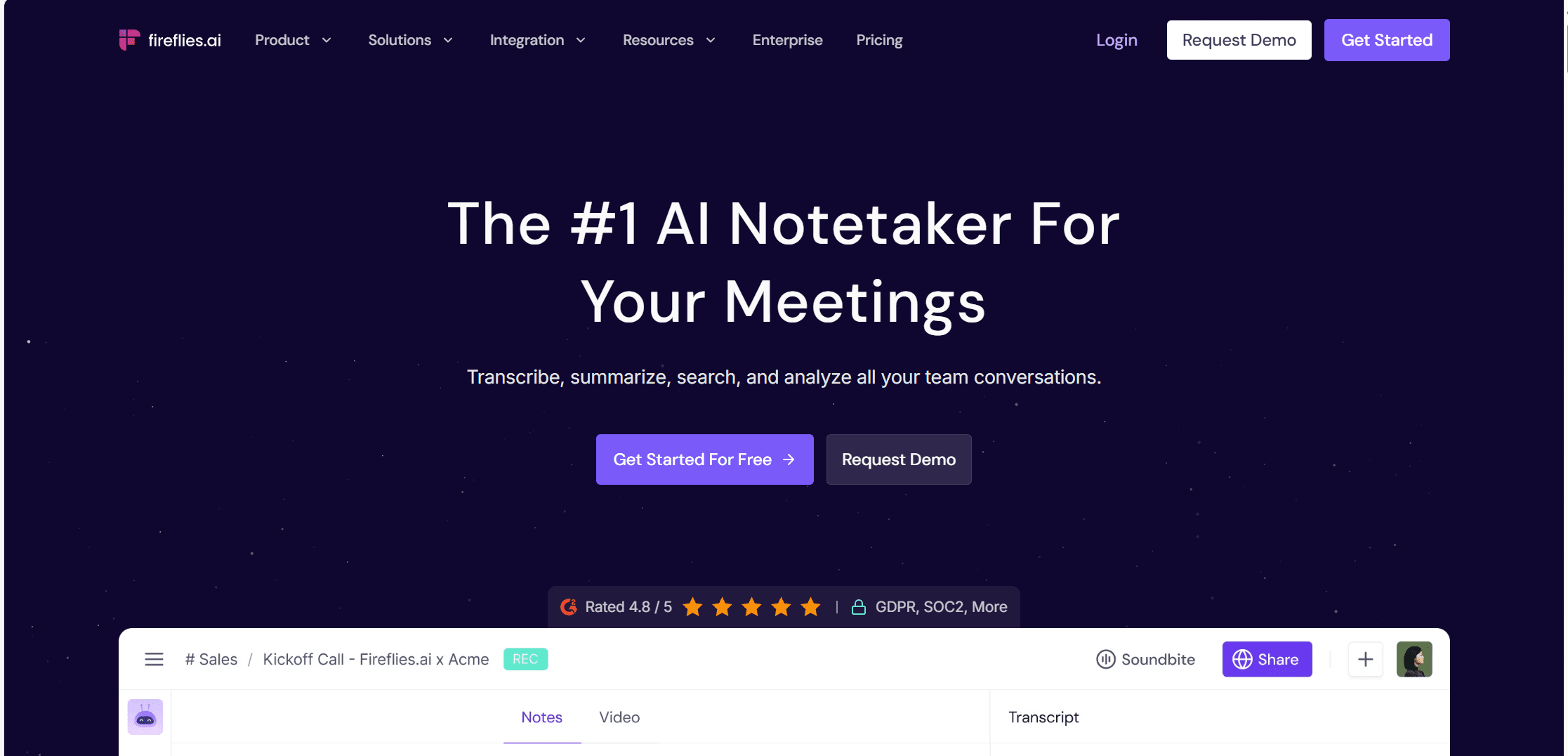
Key Features:
- Sentiment Analysis: Analyze a prospect’s tone and sentiment to uncover underlying emotions in conversations.
Cross-Platform Transcription: Capture and summarize meetings from Zoom, Google Meet, and Microsoft Teams in one place.
Smart Search & Topic Tracking: Quickly locate key topics and follow recurring themes within transcripts.
Collaborative AI Transcription: Add comments and reactions to specific transcript sections for deeper insights.
High-Quality Integrations: Connect effortlessly with other tools using their native integrations, Zapier, and the Fireflies API.
AI-Driven Search: Use AI to pinpoint essential topics across your recordings.
How much does Fireflies Cost?

Fireflies has four plans:
- Free ($0)
- Pro ($10)
- Business ($19)
- Enterprise ($39)
All prices are per user per month when billed annually.
3. Gong
Gong is a bit of a different Demodesk alternative. While it doesn’t come with a lower price tag, it offers a comprehensive suite of features tailored for enterprise-level sales teams. If you want to turbo charge your sales team, and you’ve got the cash to splurge, Gong might be a good choice for you.
Gong is a revenue intelligence platform designed to enhance the efficiency and effectiveness of sales teams. It offers advanced call recording, transcription, AI-driven insights, and seamless CRM integration. By analyzing sales conversations, Gong provides valuable information such as key trends, customer sentiment, and successful sales techniques. This enables sales teams to refine their strategies and improve communication skills.
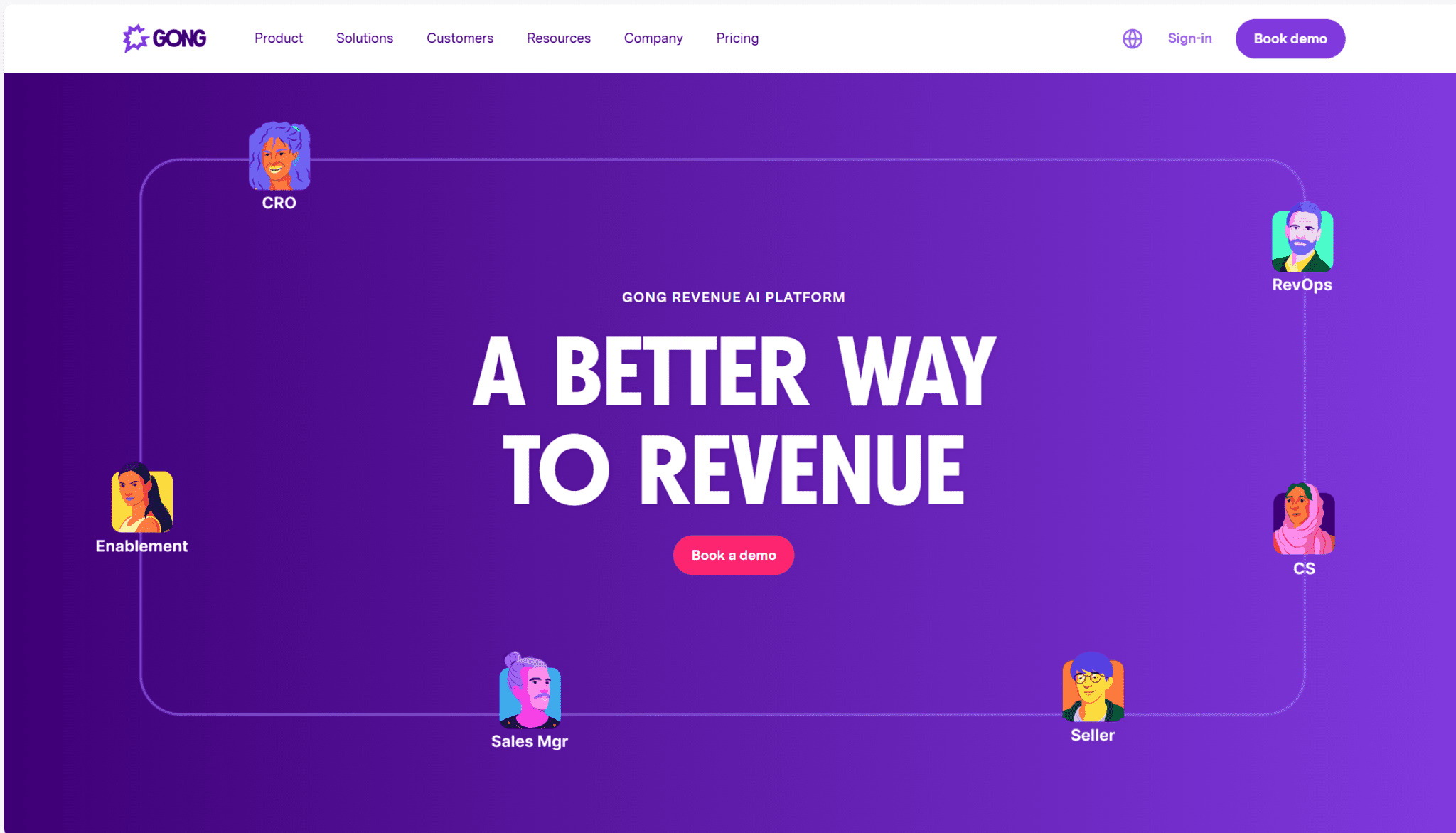
Key Features:
Conversation Intelligence: Automatically records, transcribes, and analyzes sales calls and meetings to identify successful sales tactics and customer concerns.
Deal Intelligence: Delivers real-time insights into sales deals, helping teams understand effective strategies and forecast deal success.
Sales Forecasting: Uses AI to predict sales outcomes based on historical data and real-time conversation analysis.
Real-Time Sales Coaching: Provides real-time feedback during sales calls to guide sales reps and improve effectiveness.
CRM Integration: Integrates with various CRM systems, ensuring all data is synchronized across platforms without breaking a sweat.
How much does Gong cost?
To find out Gong’s pricing, you’ll need to jump on a sales call. They don’t share their pricing online, but you can expect to pay around $100 per user per month. This can compound quickly if you’re not careful, and there’s no free trial or plan to play around with. Full disclosure: I’ve never tried Gong myself as there’s no option to without breaking the bank, but it’s frequently cited as one of the top sales and revenue platforms for meeting intelligence.
That said, tl;dv gave it a run for its money in Dani’s comprehensive breakdown: tl;dv vs Gong.
Final Verdict: Is Demodesk Worth Your Time (and Money)?
To sum it up in a single word: no.
While initially impressed with the speed at which I was onboarded and how easy it was to navigate the platform and get it to join my call, my increasing expectations were suddenly and dramatically blown to smithereens when I received the notes and transcript. Not only was the speaker recognition highly inaccurate, the notes were contextually flawed and in a frustratingly unchangeable (and irrelevant) format.
When I tested it a second time for languages, it was laughably bad. It dreamed up that I was a Norwegian, gave me Norwegian follow-up emails to send, missed entire chunks of the transcript (20+ seconds), and then transcribed all the German language in English (which might not be so bad if it hadn’t first transcribed my English into Norwegian).
The AI assistant and coaching were both pretty impressive. The assistant was able to provide me with better notes than the automatically generated ones, complete with timestamps so I could hop to the moment in question, while the AI coaching was interesting to play around with, although I hadn’t had a sales call so it was never going to be entirely relevant for my test.
It’s worth noting that Demodesk scores pretty well across the board from reviews of actual users, so it would be a good idea to check some of those out too if you’re seriously considering Demodesk.
Either way, for me, it’s impossible to recommend a transcription tool that fails at transcribing accurately. It’s like eating mediocre-tasting food that has zero nutritional value. What’s the point?
FAQs About Demodesk
What is Demodesk and how does it differ from traditional meeting tools?
Demodesk is a meeting platform built specifically for sales teams. Unlike traditional tools like Zoom or Google Meet, it provides advanced features such as virtual screen sharing (that doesn’t expose your desktop), real-time coaching, and scheduling automation — all aimed at improving the performance and consistency of sales demos.
Is Demodesk better than Fireflies for sales teams?
Demodesk is optimized for live call execution, giving reps tools to run high-quality demos and follow structured playbooks. Fireflies specializes in meeting transcription, searchable notes, and CRM automation. If your goal is improving rep performance during calls, Demodesk offers a more targeted solution. However, Demodesk’s transcription accuracy is not on the same level as Fireflies.
Does Demodesk integrate with my CRM and calendar?
Yes. Demodesk integrates with major CRMs like Salesforce, HubSpot, and Pipedrive, as well as popular calendar tools. These integrations allow for automated scheduling, lead enrichment, and streamlined post-call workflows.
Can Demodesk help new sales reps onboard faster?
Absolutely. Demodesk’s guided workflows, interactive scripts, and real-time support make it easy for new reps to get up to speed quickly. Managers can ensure consistent messaging and provide live coaching without disrupting the call.
What are the top alternatives to Demodesk?
Great Demodesk alternatives include:
tl;dv – Best for scheduled reports, multi-meeting intelligence, and powerful CRM syncing.
Fireflies – Great for cross-platform transcription and internal meetings.
Gong – Ideal for post-call analytics, deal tracking, and sales forecasting.
Does Demodesk support real-time sales coaching?
Yes. While I didn’t get to test this out personally, Demodesk enables live coaching by allowing managers to shadow calls, provide in-call prompts, and guide reps with contextual tips and sales playbooks — all without disrupting the conversation.
